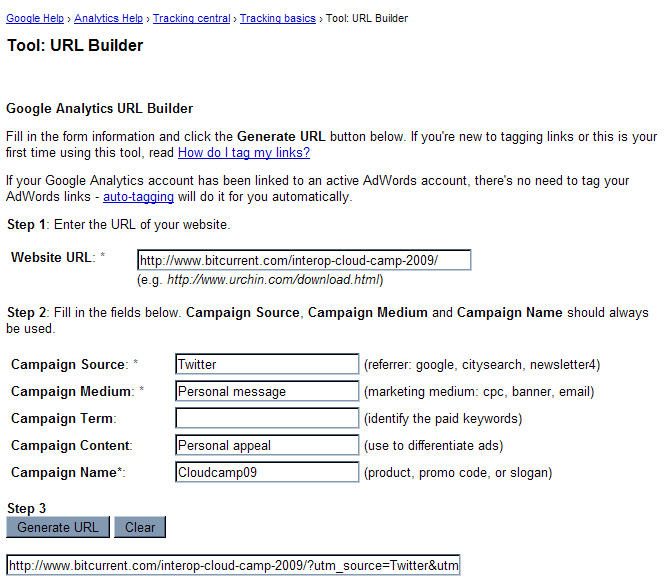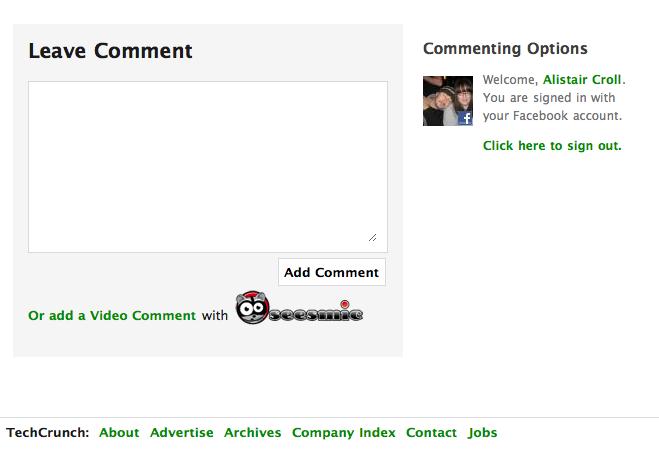There’s no standard way to track community interactions, and there’s a wide variety of data to collect across the eight community types we’ve seen, so you’re going to have to stitch together, clean up, and present community metrics yourself. There are paid tools that can help you collect and analyze community activity, which we’ll look at later in this chapter. First, however, let’s consider what you need to report.
The first rule for reporting is to remember why you have a community initiative in the first place. If the goal is to increase brand awareness, you should be reporting on visibility and mentions. On the other hand, if it’s to reduce support call volumes, you need to track inbound calls and use of the online support forum.
Remember all the promises you made to your executive sponsor when you launched the community initiative? Tracking your progress toward the goals you agreed upon back then is critical. This is why you needed to know what the purpose of the community was: it’s the only way to know what to report. It’s easy to get bogged down in statistics and metrics about communities, but you need to distill all of that data down to the few nuggets of insight that help you inch toward your goal. Your executive sponsor won’t care how many friends you have—she’ll care how many of them told one another to buy something.
Table 14-1 lists some of the data you may want to include in a community report for your organization.
Table 14-1. Suggested list of metrics that you should include in a regularly published community report
Topic | Detail | Statistics |
|---|---|---|
Business outcomes | Conversions | Percent of visitors Dollar amount |
Resolutions | Number of queries resolved online User satisfaction with results | |
Contributions | Numbers of posts, posters, and new first-time contributors | |
General information | Notes and excerpts | Specific comments worthy of attention |
Internal community | Mailing list | New enrollments, bounce rate, reach |
Support forum | Top 10 topics Top 10 most frequently asked questions Answers per question Votes per question Question ranking feedback Tag cloud of key topics Analytics reports | |
Chatroom | Volume of chat activity (messages, users) Analytics reports | |
Facebook group | Number of members, number of messages, segmentation if needed | |
External community | Micromessaging | Topic activity, hashtag activity, tag cloud of inbound messages, number of followers Identification of key reTweets or first mentions |
Blogosphere | Number of post mentions, number of comment mentions, top 10 posts mentioning you ranked by Technorati ranking | |
Social news aggregators | reddit, Digg, StumbleUpon, and Slashdot scores for any posting |
You should always show reports against a historical graph (data is far more meaningful when it’s delivered as a comparison) and you should annotate these reports with events such as mailouts, posts, outages, software releases, or marketing campaigns that might have triggered changes in community behavior.
Tying business outcomes to the long funnel of a community is challenging. You can still understand the overall impact of communities on conversion, even if you’re just overlaying the number of times your product is mentioned alongside website conversions at that time. This won’t show you individual conversion rates, but it will show you what impact various conversations had on your business.
But what if you want to segment and analyze traffic more closely?
An old marketing technique that works well is to create unique links for each social network, which will allow you to track their spread as you distribute them throughout the world.
If someone submits a URL from your website on reddit or broadcasts it through Twitter, that person will grab whatever string is in the address bar. Your site can dynamically modify this (for example, with a timestamp) and use this information to track when the link was first copied. This kind of integration isn’t for the faint of heart, since it requires a coordinated effort from engineering and marketing, but if you look carefully at the URLs of some of today’s biggest sites, you’ll see it happening.
Most of the analytics tools available for microblogging sites don’t deal in business outcomes. They’re more about popularity and frequency of communications, and less about which people or groups are driving customer behaviors you want. One reason for this is the inherent brevity of the messaging model. As an email marketer, you can send long custom URLs to each recipient and then track sessions by those URLs to assess whether a campaign was successful. However, it’s hard to do that in 140 characters.
Traditional direct marketing relied on giving each prospect a unique identifier, allowing businesses to track prospects individually. This only works in a one-to-one model, however; on Twitter, everyone can read your status page and see the same URL.
One way around the constraints of one-to-many messaging is a three-step campaign model outlined in Figure 14-47:
Send a promotion to your audience, asking them to reply with a certain string if they’re interested.
When users reply with that string, reply to them with a direct message that contains a unique URL, preferably one that embeds campaign and follower data.
Track referrals from that campaign and the rest of the conversion funnel using traditional analytics.
Today, this kind of tracking is relatively unsophisticated and isn’t well integrated into analytics or other tools, but as micromessaging models become more commonplace we expect to see more marketing of this sort. This is a likely source of longer-term revenue for Twitter, too, since the company can dynamically rewrite URLs in transit.
You can try out several messages to a community to see which works best by using URL parameters for marketing campaigns. This process is illustrated in Figure 14-48.
Create the marketing messages you want to test out.
For each message, create a custom URL using a campaign builder (such as Google’s URL builder).
Using a URL shortening service, generate a shortened URL. This will contain not only the URL of your content, but also the campaign parameters encoded in the URL.
Publish the message to the community, along with its associated shortened URL.
When members of the community see a message that appeals to them, they’ll click the shortened URL.
The URL service will redirect members to the full campaign URL.
When members are redirected to your content, the analytics tool will extract the campaign parameters and include them in your analytics reports as segments.
The best part is that this will happen whether members click on the link on the Web, within an email, or on a desktop client, so you can track viral spread across networks and tools.
This might seem a bit complex, so let’s look at an example. Consider that we want to promote an upcoming event to our Twitter network. We first choose three message approaches:
“Don’t miss out on this exciting event”
“We need experts for the event”
“Please come to the event; I miss you!”
For each of these, we create a URL using the Google URL builder (http://www.google.com/support/googleanalytics/bin/answer.py?hl=en&answer=55578), shown in Figure 14-49. Note that we flag each of these messages with a unique “content” field, but we could use other fields for other segments, such as the social network we’re posting the message on or the medium (email, text message, blog comment) we’re using.
We now have a unique URL, which contains a web page and four parameters:
http://www.bitcurrent.com/interop-cloud-camp-2009/ is the destination page to which the link will lead.
?utm_source=Twitteris the source of the traffic (where we intend to post the message).&utm_medium=Personal%2Bmessageis the format. If we’d used a banner or an email message, we’d mention it here.&utm_content=Personal%2Bappealis the tone of the message (in this case, “personal message,” but we will also generate URLs for “Don’t miss out” and “Need experts”).&utm_campaign=Cloudcamp09is the name of the campaign, which we use to distinguish it from other campaigns.
At 154 characters, that URL’s a bit unwieldy—far too long to fit in a Twitter message, plus our community might notice that we’ve embedded a lot of information in there to track its members. We can easily shorten it into just a few characters, however, as shown in Figure 14-50.
Now we have a nice, short URL that we can embed in our message to Twitter (Figure 14-51). By combining the messages we’ve crafted with the shortened URLs that identify them, we can track which messages resonate best with our audience.
After we run the campaign for a few days, we can see the results in Google Analytics, as shown in Figure 14-52.
Bear in mind that this technique is far from scientific: different messages go out at different times of day, when different numbers of visitors are online. More importantly, you’ll get more attention for the first of the three messages you send, and a drop-off for subsequent messages, so try to pick a few tones of voice to stick with across several posts and transmit a different tone each time to remove this bias and learn what works best. Startup awe.sm and others are offering more automated, better integrated versions of this approach, too.
This is a good example of instrumenting the long funnel, tying together community analysis (discussions of a particular message) with analytical outcomes.
In November 2007, Facebook announced a system called Beacon that would track users across partners’ websites. The marketing advantages were obvious: with better visibility across the Web, marketers could understand how and why visitors did what they did. Facebook members were less than enthusiastic, and the company quickly relented.
Since then, Facebook has introduced a more moderate system, called Facebook Connect, that lets Facebook users flag content elsewhere online and tell their social graphs about it. As Figures 14-53 and 14-54 show, a Facebook Connect account spans several websites. When users log into blogs with their Facebook accounts, comments they leave are associated with their Facebook personas. That means comments are shared with their social graphs as part of their lifestreams.
Figure 14-53. Facebook Connect integrated with TechCrunch; the system “follows” a user across the blogs on which they comment on an opt-in basis, then posts their comments to their Facebook lifestreams for their social graphs to read
Cross-community sites like Facebook Connect are likely to become more popular, since they provide an easy way for community members to track their contributions and share with their friends. Sites that participate in Facebook Connect get increased visibility through the sharing of those comments, and Facebook gets analytical data it can monetize.








